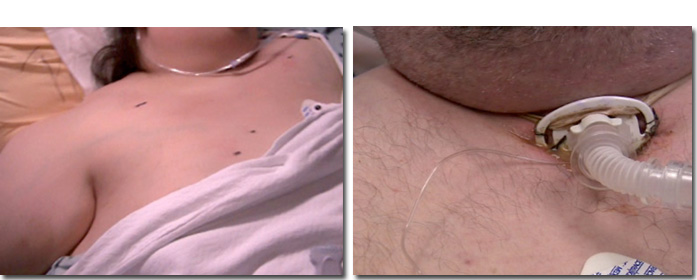| First Section Page | Page 2 of 3 | Last Section Page |
Special Considerations
(continued)

Severely obese patients are at higher risk for CVC placement due to loss of anatomical landmarks, excessive skin folds and maintenance of an occlusive dressing post insertion. Use of ultrasound is encouraged to reduce these risks.

Long-term renal patients may have several old insertion sites, scar tissue and thrombus. A vessel health and preservation policy is mandatory for renal patients. Avoid subclavian insertion in order to preserve future dialysis access, i.e. arteriovenous fistulas and grafts. Temporary hemodialysis (HD) catheters are routinely placed to bridge tunneled catheter placement or permanent graft maturity.